Taboola is one of the world’s largest native advertising networks, and is a fast-growing alternative to traditional banner ads. Using Taboola, advertisers can display native ads on highly authoritative websites including Bloomberg, Business Insider, FOX, and CBS News.
To get the most use out of your Taboola ads, its recommended you install the Taboola Pixel on your website. With the Taboola Pixel installed, Taboola is able to track users behaviour on your website and attribute conversions to your ads, giving you deeper insights into your campaign performance. You are also able to build custom audience lists which you can then target with remarketing ads, or exclude from your campaigns.
In your Taboola Backstage account, navigate to Taboola Pixel -> Conversions. Then click on “New Pixel” in the top right corner to generate your pixel code.
There are two methods for implementing the Taboola Pixel with Google Tag Manager:
- Use the Taboola Pixel template tag in GTM.
- Create a new Custom HTML tag in GTM and paste in the Taboola Pixel code.
Option 1 – Use the Taboola Pixel template tag in Google Tag Manager
Taboola has created a template tag for Google Tag Manager to simplify the process for you. To use the template tag, log in to your Google Tag Manager account, and click on “Templates” in the left menu column. Then, click on “Search Gallery” to open the GTM community template gallery.
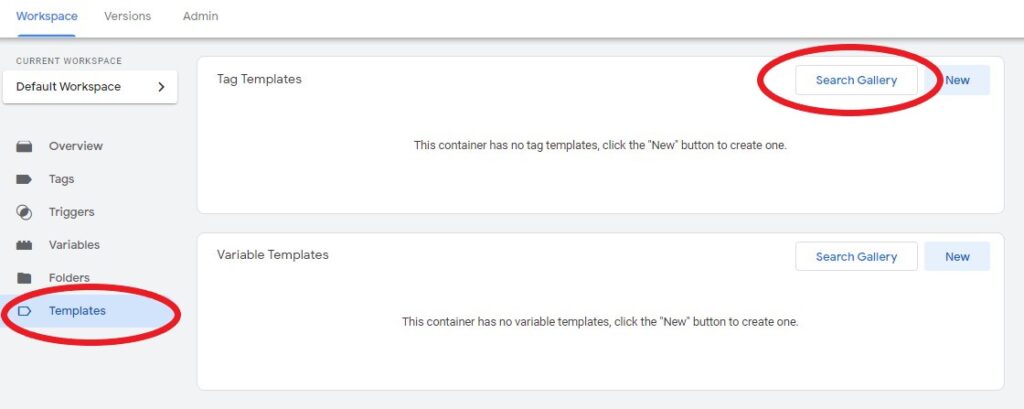
Search in the list of tags in the community template gallery for “Taboola Pixel” to find the official tag template from Taboola. Select the Taboola Pixel tag template and click on “Add to workspace” to import it.
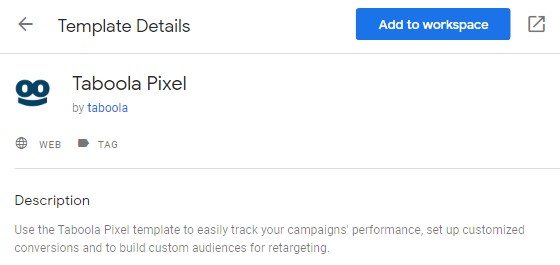
After clicking “Add to workspace”, you might see a warning asking if you want to add the tag to your website. GTM warns you that Taboola’s tag is injecting a 3rd-party script into your website. Click on “Add” to continue adding the tag template to your GTM workspace.
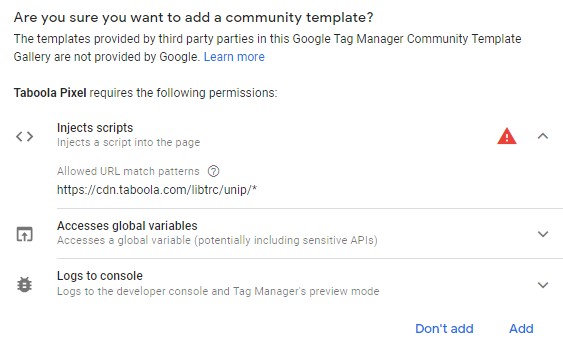
After adding the Taboola Tag template to your workspace, you’re now to ready to create a new GTM tag using the tag template.
Create a new Tag in GTM by clicking on Tags in the left menu and then click on “New” in the top right corner. In the list of tag types, you should now have a Taboola Pixel tag type in the Custom section:
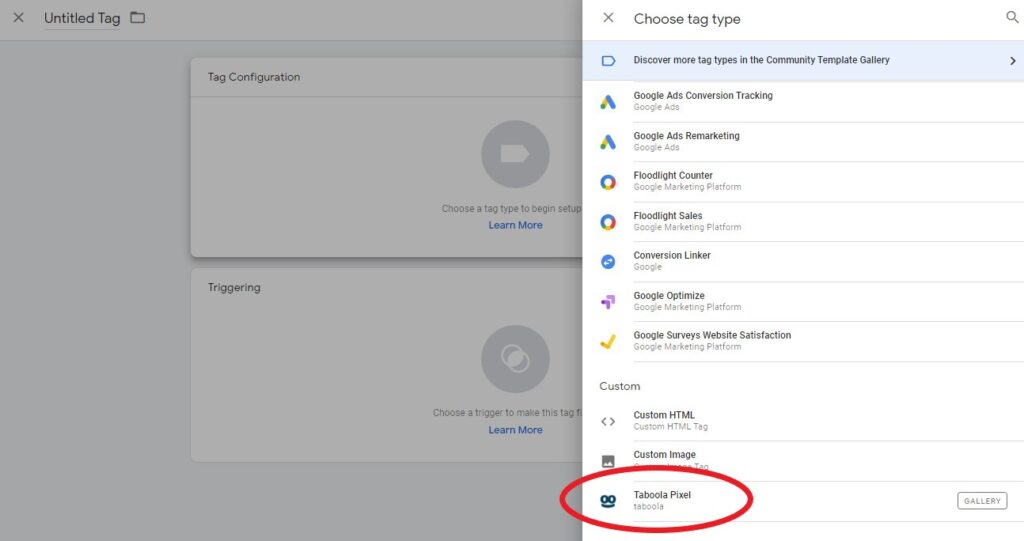
Type in your Taboola Account ID into the required field, and keep the pixel type set to Base pixel. You can leave the Custom parameters unchecked for now. Under “Advanced Settings” change to tag firing options to “Once per page”.
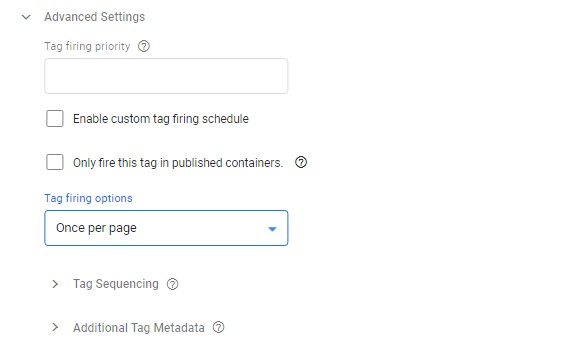
Under Triggering, select the “All pages” trigger. Save the tag and then click “Submit” in the top right corner to publish the GTM container with the new Taboola Pixel included.
Go back to the Conversions page in your Taboola account, and after a few minutes it should display a message indicating the conversion pixel is Active. You might need to wait up to 20 minutes for the message to appear, or longer if your website receives a low volume of traffic.

Once Taboola has indicated the pixel is active, you’re now ready to start building audiences, or extend your Taboola Pixel further with event-based tracking. Have any issues implementing the Taboola Pixel with Google Tag Manager? Let me know in the comments below and I’ll do my best to assist you.
Be First to Comment